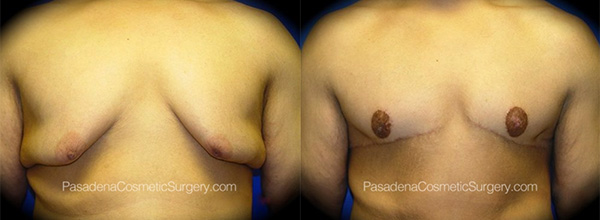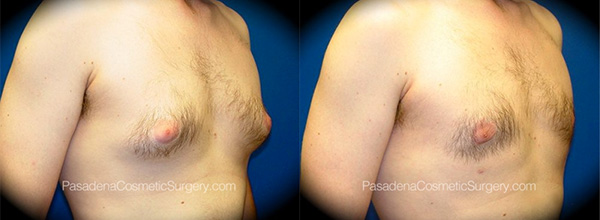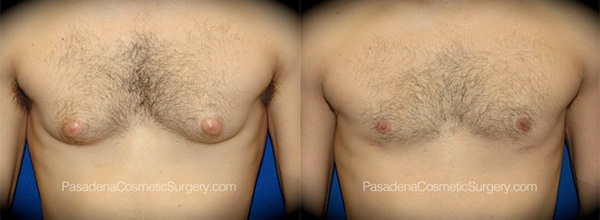How Can Gynecomastia Surgery Help?
The best gynecomastia treatment will depend on the cause of your condition and the look you desire. We always tailor our male breast reductions to the patient to ensure the best results possible.
Schedule a ConsultationCauses
Gynecomastia is a common condition that affects men of all ages and is usually due to a decrease in testosterone. Common causes of enlarged male breasts include:
- Genetics
- Health conditions, like hyperthyroidism
- Weight gain
- Obesity
- Weight loss
- Steroid use
- Alcohol abuse
- Marijuana use
Candidates
Ideal male breast reduction candidates should be:
- Nonsmokers (those who do should quit at least six weeks prior to surgery)
- In good physical health
- Close to an ideal goal weight
- Ready to follow all pre- and post-op instructions
- Realistic in their expectations about the results
Treatments
- Liposuction – It is used to eliminate excess fat from around the areola and also to contour the chest and enhance definition.
- Smartlipo™ – This laser-assisted liposuction uses heat to liquefy fat and tighten skin; provides for easier fat removal with less post-operative swelling.
- Excision – Glandular tissue or lax skin is removed from around the chest. The remaining tissue is draped to highlight the contour of the chest.
- Areola repositioning – The nipple-areola complex is repositioned on the chest to restore a balanced appearance.
What are your Concerns?
Recovery
Male breast reduction surgery requires a few days of downtime with limited physical activity. Patients can return to work within three to five days of their procedure if the job doesn’t require strenuous activity. You will wear a compression garment for four to six weeks, which helps minimize swelling and bruising. Depending on how quickly you heal, you can return to your regular exercise routine after three to five weeks.
Cost
The cost of a male breast reduction is dependent on the extent of the surgery, techniques used, and other factors such as facility and anesthesia fees. According to the American Society of Plastic Surgeons (ASPS), the average surgeon’s fee for gynecomastia surgery in 2015 was $3,677.
Pain
Once anesthesia wears off, some patients may experience moderate pain or discomfort. Pain can be controlled with prescription medications. Your chest may feel tight and sensitive to the touch, but once swelling alleviates, your chest will feel more normal.
Scarring
Incisions are placed in the natural contours of the chest to help mask any scarring. Over time, and as the body recovers, scarring will fade and will become easily concealable.
Results
Once the swelling subsides, the results of your male breast reduction will be noticeable. When incision lines fade, you can expect a chest contour that is more attuned with the rest of your body. A healthy lifestyle following your treatment is necessary to ensure future issues don’t arise.
FAQs
-
What type of anesthesia is used for male breast reduction surgery?
Male breast reduction surgery is performed using intravenous sedation or general anesthesia.
-
How long do the results of a male breast reduction last?
Results are typically long lasting. However, it is important to address the original cause of your breast development. If left untreated, gynecomastia may redevelop. You may also notice that your chest appearance can experience some changes as you age.
-
What are the potential side effects of male breast reduction surgery?
There are some side effect and risks associated with male breast reduction. Some of these may include:
- Infection
- Bleeding
- Poor scarring
- Pain
- Seromas
- Anesthesia risks
-
Can a male breast reduction be combined with other procedures?
Patients seeking chest correction following a recent weight loss may also experience excess abdominal skin. Your gynecomastia treatment can be combined with tummy tuck surgery to restore a fit and toned physique.







